Concept
The design of the sundial aims to showcase some of the main and common cultural elements found in the Nusantara region of South East Asia. The Malay Archipelago (Nusantara), is the archipelago between mainland Indochina and Australia.
Situated between the Indian and Pacific Oceans, the archipelago of over 25,000 islands and islets is the largest archipelago by area and fourth by number of islands in the world. It includes Brunei, East Timor, Indonesia, Malaysia, Papua New Guinea, the Philippines and Singapore. The term is largely synonymous with Maritime Southeast Asia.
Name & Motto

The name of this horizontal sundial is ‘Rukhamah Keris’, or the horizontal keris sundial. Rukhamah is an old Arabic name for a horizontal sundial. The name is written in the Jawi script, a derivative of the Arabic script, developed in this region with the introduction of Islam. Jawi script consist of all of the original 28 Arabic letters, and six additional letters constructed to fit the phonemes native to Malay but not found in Classical Arabic.
The motto of this sundial is from the Holy Quran, with the explicit reference to shadows and their movement due to the Sun.:
-
Do you not see how your Lord lengthens the shadow? If He had willed, He could have made it stand still– Then We made the Sun its guide. (The Qur’an 25:45)
One of the main determinants of the culture in the Nusantara is the religion of Islam. It is the religion of the majority of the inhabitants of the region.
Islam has shaped the belief, practices, and lifestyles of the region’s inhabitants since the 14th century.
The Holy Quran has dozens of ayah (verses) that mention and allude to astronomical bodies and phenomena for Man’s reflection and study.
For example:
- He it is Who made the sun a shining brightness and the moon a light, and ordained for it mansions that you might know the computation of years and the reckoning. Allah did not create it but with truth; He makes the signs manifest for a people who know. Quran (10:5)
-
Behold! in the creation of the heavens and the earth, and the alternation of night and day, there are indeed Signs for men of understanding, Who remember Allah while standing or sitting or [lying] on their sides and give thought to the creation of the heavens and the earth, [saying], “Our Lord, You did not create this aimlessly; exalted are You [above such a thing]; then protect us from the punishment of the Fire. (The Quran 190-191)
The Keris Gnomon
The gnomon of the sundial is in the shape of a kris ( Keris in Malay). The shadow of the pointed edge of the top part of the kris, the ‘kepit’, indicates time and date.
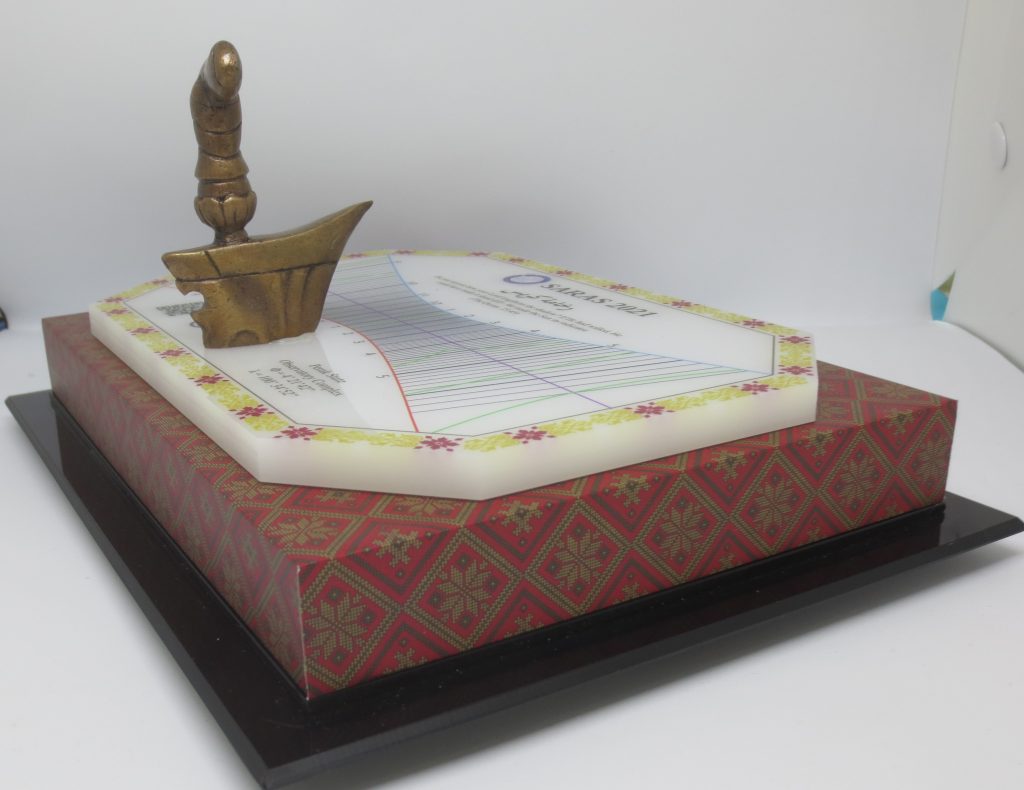
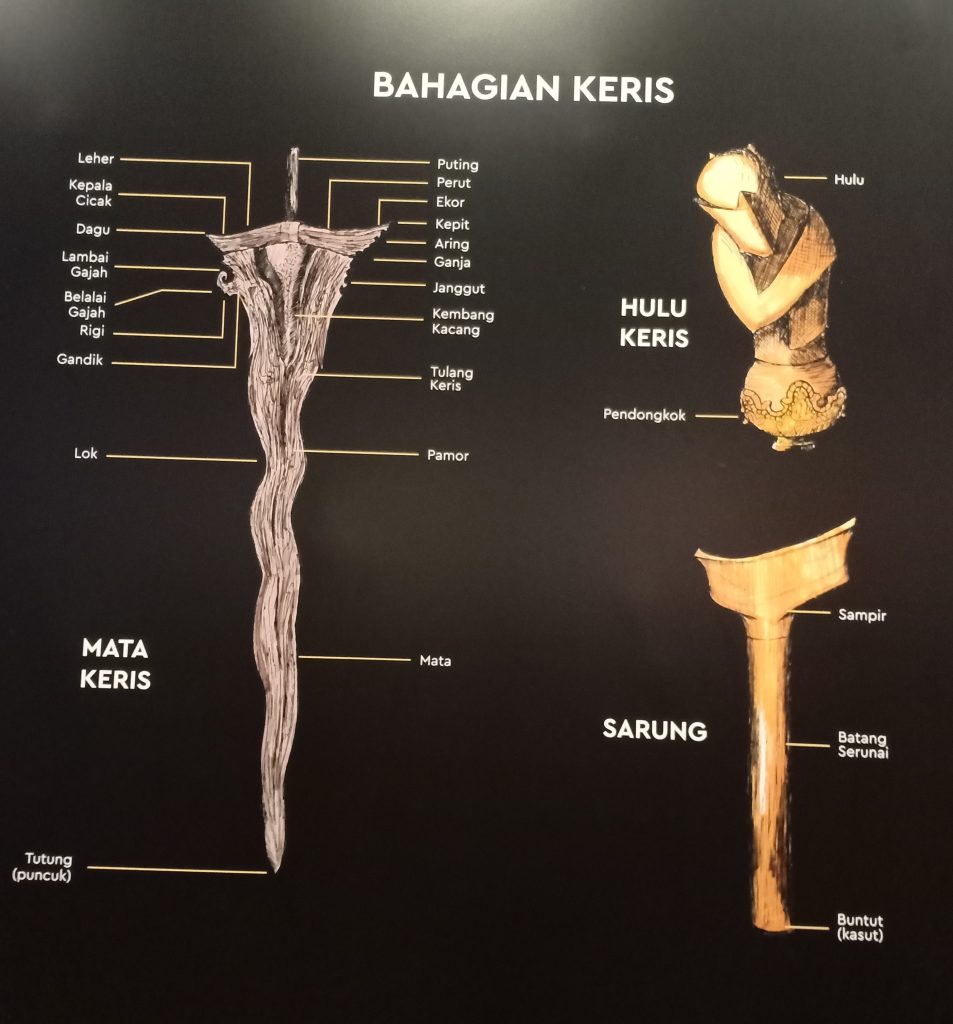
Kris in Malay Culture
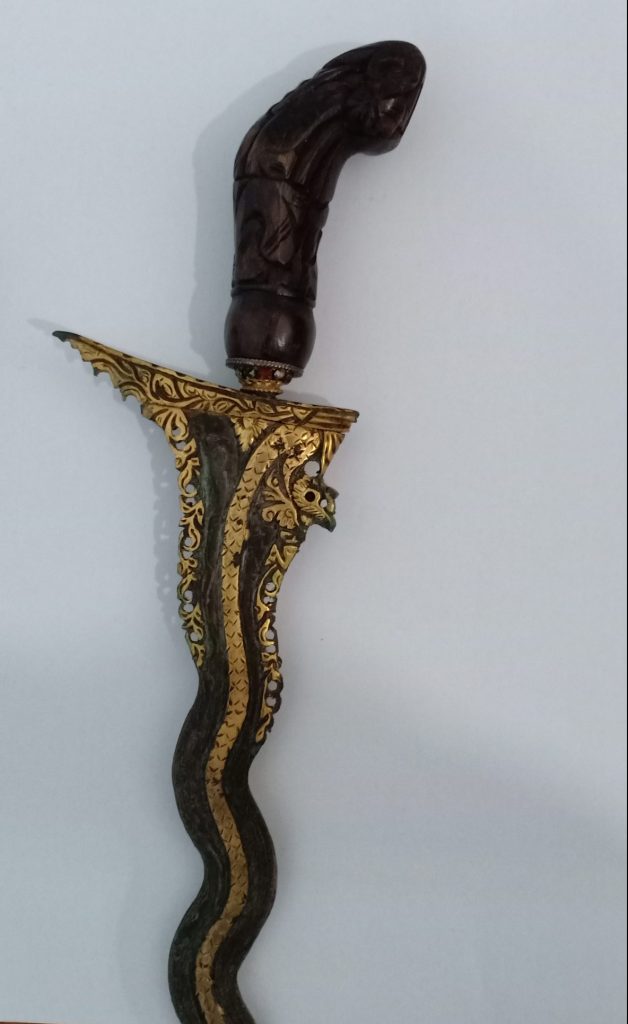
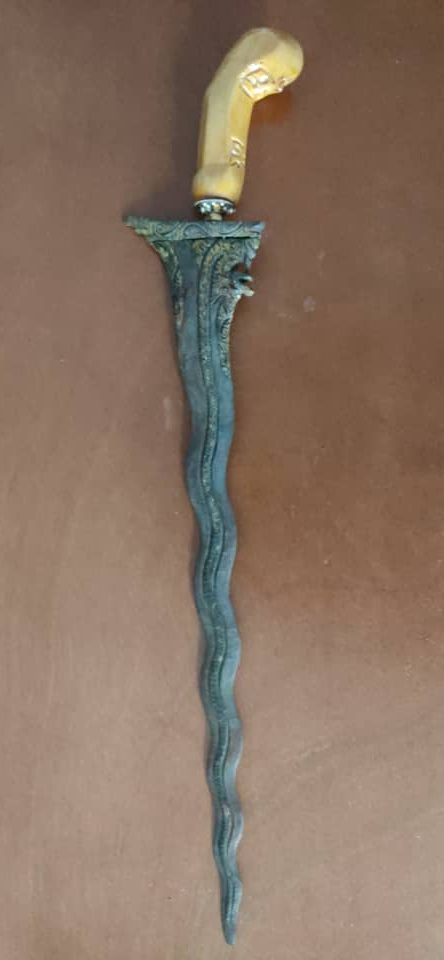
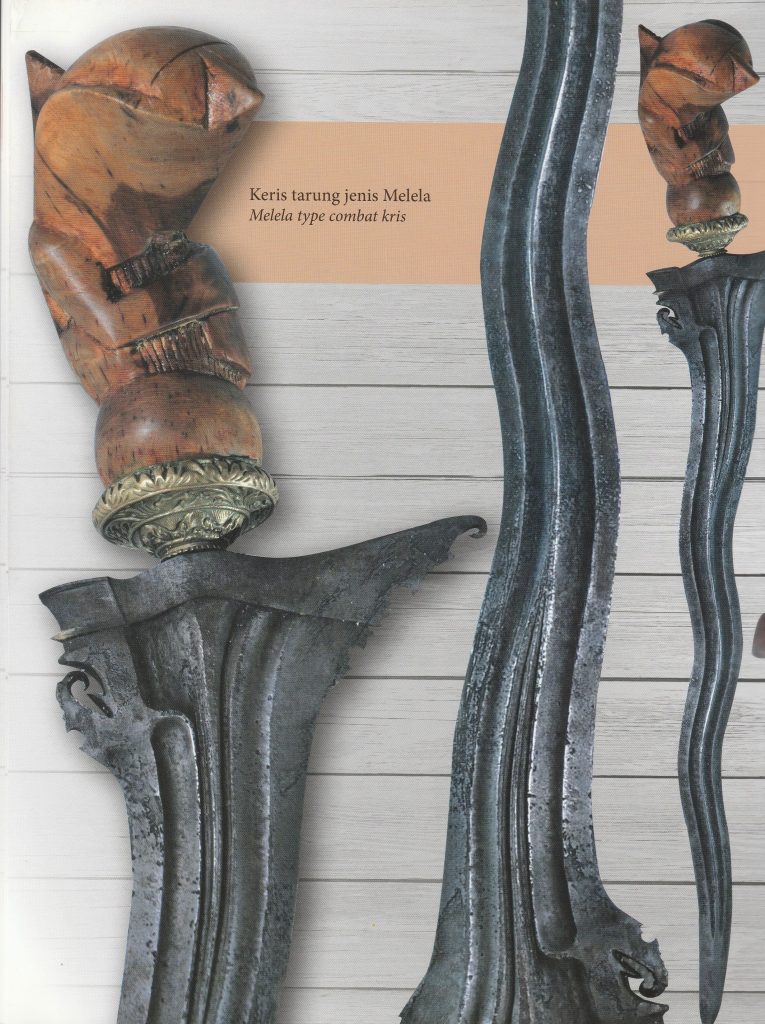

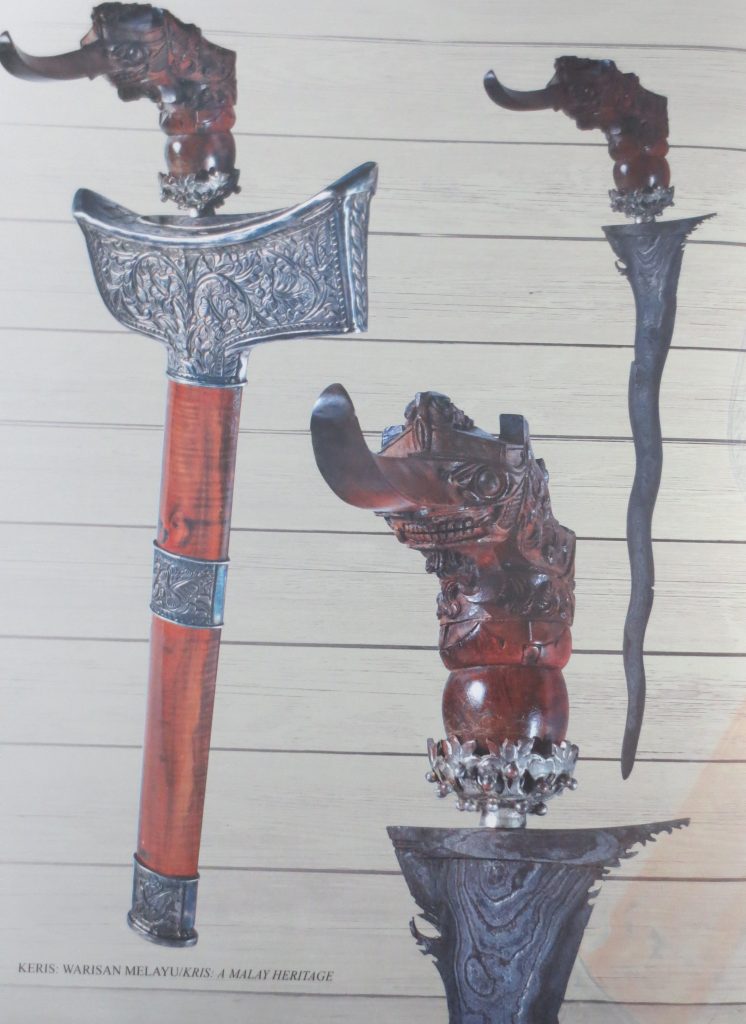
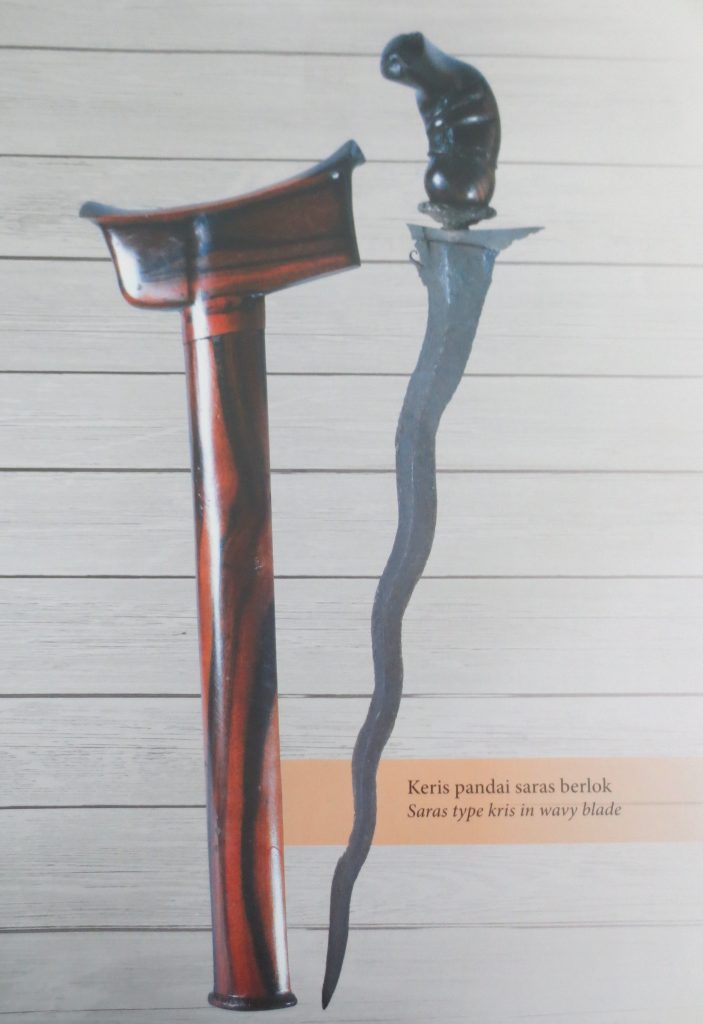
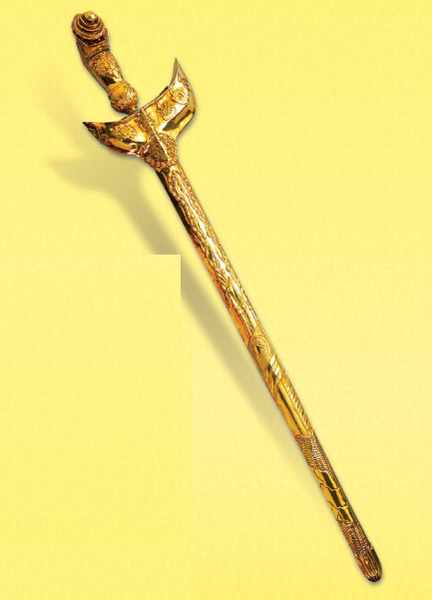
The kris is synonymous with the Malay culture and way of life. The double-edged dagger is unique because it is only found within the Malay Archipelago. It is found in Southern Thailand (Patani), Malaysia, Indonesia, Southern Philippines (Mindanao), and in the Cham areas of Cambodia.
In its most basic definition, a kris is a double-edged dagger with a wavy blade.
At its best, the kris represents the highest level of Malay creativity.
Whereas it was once worn for protection or as a deterrent to hostility, it is now used in a more symbolic or ritualistic manner affording the wearer proper status as a Malay, or among the Javanese particularly, a symbol of the bearer’s manhood. Thus, among all weapons, the kris is perhaps unique in that its principal function has long been that of cultural association, rather than that as a weapon or extension of the hand for engaging in combat. It represents and contains philosophies, mysticisms and spiritual beliefs of Malay culture. Kris is a powerful weapon of Malay cultural heritage. Kris is more than a weapon and more than just clothing accessory. Kris is a symbol of Malay identity and possesses the following values:
- Kris as a symbol of sanctification and dignity – each good kris contains specific values, strengths or priorities that can become a source of inner and external power that symbolises blessing and self-respect.
- Kris as a symbol of masculinity – the kris is believed to have a strength that can enhance the courage, strength and self-confidence derived from manhood or masculinity.
- Kris as a symbol of honour – the kris is believed to contain the values of self-esteem or its owner’s authority.
- Kris as a symbol of identity – the kris is believed to contain the values of its owner in the variety of materials it produced from and the symbolism it has.
- Kris as a symbol of Authority and Power– the kris contains values and strengths that can sustain its owner’s integrity, authority, and power. It is a symbol of majesty, dominion and rank in royal regalia.
- Kris as a symbol of the owner’s person – kris is believed to be the owner’s person because, in certain ceremonies or needs, it can be the representative or proxy of the owner.
- Kris as a Weapon – kris is specifically designed as a primary weapon.
- Kris as a Guardian of the owner – kris becomes a guardian of the owner to protect him and his own family or people from various challenges and dangers, both spiritually and physically.
- Kris as attire – kris has a variety of values, symbols, and philosophy and is thus used as a lifelong attire.
- Kris as a helper in various fields – kris has strengths or values that can help in multiple facets of daily life.
There's a SARAS Keris !

Saras was an expert kris blacksmith (empu) that migrated from Java of Majapahit Kingdom to Pattani (in present-day Thailand) in late 14 century! His krises are artistically pleasing and of high quality. The cross-section of his kris is diamond-shaped that gave the kris added strength.
Kris blades are made by forging steel, hilts made of wood or ivory, with wooden sheaths. This kris gnomon, however, is made by casting bronze with the lost wax method.
Brass and bronze casting is a heritage craft metallurgical process still practised in some parts of Malaysia. Utensils and decorative items are some of the products produced in Terengganu, Malaysia.

Border Motifs
The motifs on the border of the sundial are inspired by the wood carving motifs of the Malays.
Wood carving is a decoration found in many Malay houses, palaces, mosques and pulpits. These carvings are also seen on traditional musical instruments and household furniture, such as cupboards, beds, chairs, tables, on kris hilts and ship and boat bows.

Songket Platform
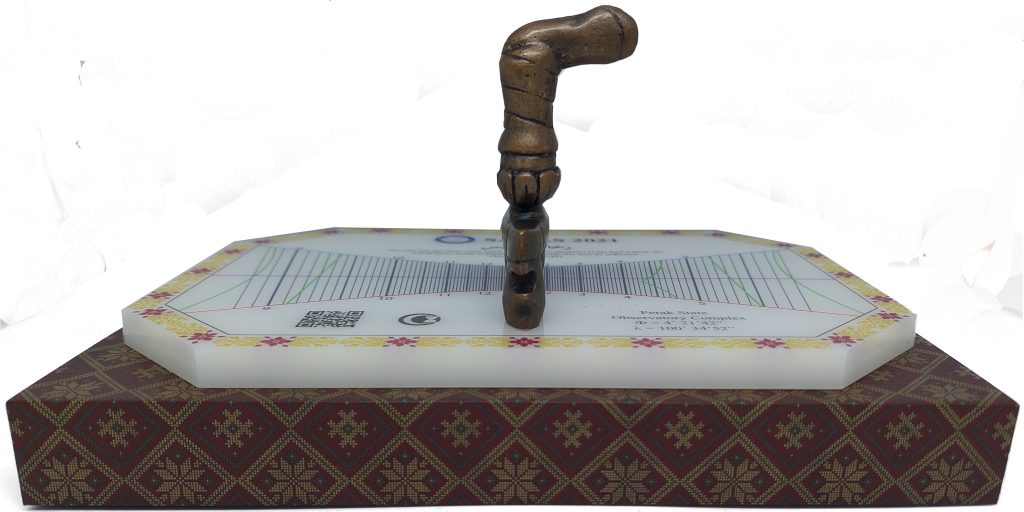
The platform of the sundial is printed with songket motifs.
Songket cloth is a hand-woven traditional Malay fabric with gold and silver threads worn mainly during l formal functions and ceremonies.
Songket is a unique woven fabric of the Malay world produced with traditional machines producing intricate patterns using silk or cotton with gold or silver threads.
Its patterns and motifs display the unique characteristics of the Malay identity and thus reflect the cultural tastes of the nation that bloom in an environment rich in beauty and uniqueness of plants, animals and nature.
The songket motif used for the decoration of this rukhamah is the star flower. The star flower consists of eight attached flower petals in the middle to form a star.
